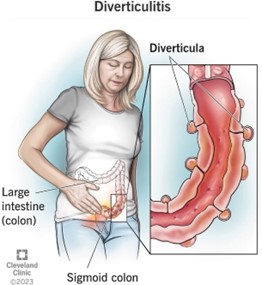A nurse is reinforcing teaching for a client who has type 1 diabetes mellitus about foot care. Which of the following client statements should indicate to the nurse an understanding of the instructions?
“I put lotion between my toes.”
“I check my feet every day for sores and bruises.”
“I wear sandals in warm weather.”
“I soak my feet in warm, soapy water every night before I go to bed.”
The Correct Answer is B
Choice A: “I put lotion between my toes.” This is incorrect because putting lotion between the toes can create a moist environment that promotes fungal growth and infection. The client should apply lotion to the tops and botoms of the feet, but avoid the areas between the toes.
Choice B: “I check my feet every day for sores and bruises.” This is correct because checking the feet every day for any signs of injury, infection, or ulceration is an important part of foot care for a client who has diabetes mellitus. The client should also report any problems to the provider and seek prompt treatment.
Choice C: “I wear sandals in warm weather.” This is incorrect because wearing sandals can expose the feet to injury, sunburn, or insect bites. The client should wear closed-toe shoes that fit well and protect the feet from trauma and environmental hazards.
Choice D: “I soak my feet in warm, soapy water every night before I go to bed.” This is incorrect because soaking the feet can cause maceration of the skin and increase the risk of infection. The client should wash the feet with mild soap and warm water, but not soak them. The client should also dry the feet thoroughly, especially between the toes.
Nursing Test Bank
Naxlex Comprehensive Predictor Exams
Related Questions
Correct Answer is ["A","B","C"]
Explanation
Choice A reason: Tachycardia is a common symptom of hypoglycemia, as the body releases adrenaline and other hormones to raise the blood sugar level. This can cause the heart to beat faster and stronger.
Choice B reason: Blurry vision is a common symptom of hypoglycemia, as low blood sugar can affect the ability of the eyes to focus and see clearly. This can also cause headaches, dizziness, or double vision.
Choice C reason: Sweating is a common symptom of hypoglycemia, as the body tries to cool down and cope with the stress of low blood sugar. This can also cause shakiness, trembling, or tingling in the lips, tongue, or cheek.
Choice D reason: Polydipsia (excessive thirst) is not a symptom of hypoglycemia, but a symptom of hyperglycemia (high blood sugar). High blood sugar can cause dehydration and dry mouth, which make the person feel thirsty.
Choice E reason: Polyuria (excessive urination) is not a symptom of hypoglycemia, but a symptom of hyperglycemia (high blood sugar). High blood sugar can cause the kidneys to filter out excess glucose and water from the blood, which make the person urinate more often.
Correct Answer is A
Explanation
Choice A reason: Roast chicken with white rice is a low-fiber, easy-to-digest meal that is suitable for a client who has recovered from the acute phase of diverticulitis. A low-fiber diet can help reduce the stress on the colon and allow it to heal. White rice is a refined grain that has less fiber than whole grains, such as brown rice or quinoa12.
Choice B reason: A poached egg with sliced tomatoes is not a good choice for a client who has recovered from the acute phase of diverticulitis. Although eggs are a good source of protein and do not contain fiber, tomatoes are high in fiber and may irritate the colon. Tomatoes also have seeds, which were previously thought to cause problems for people with diverticular disease, but there is no evidence to support this. However, some people may still find them uncomfortable to eat13.
Choice C reason: Bean soup with steamed broccoli is not a good choice for a client who has recovered from the acute phase of diverticulitis. Beans and broccoli are both high in fiber and may cause gas, bloating, and cramping in the colon. A high-fiber diet is recommended for people with diverticulosis (the presence of pouches without inflammation) to prevent constipation and diverticulitis, but it should be avoided during or shortly after an episode of diverticulitis12.
Choice D reason: Ham sandwich on white bread is not a good choice for a client who has recovered from the acute phase of diverticulitis. Although white bread is low in fiber, ham is a processed meat that may increase the risk of developing diverticular disease. Research suggests that a diet high in red meat and processed meat may contribute to inflammation and infection of the pouches in the colon.

Whether you are a student looking to ace your exams or a practicing nurse seeking to enhance your expertise , our nursing education contents will empower you with the confidence and competence to make a difference in the lives of patients and become a respected leader in the healthcare field.
Visit Naxlex, invest in your future and unlock endless possibilities with our unparalleled nursing education contents today
Report Wrong Answer on the Current Question
Do you disagree with the answer? If yes, what is your expected answer? Explain.
Kindly be descriptive with the issue you are facing.
